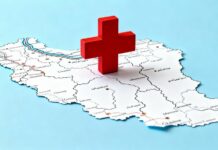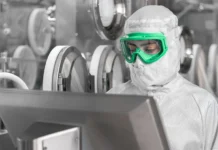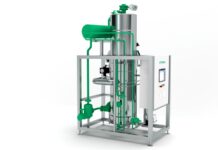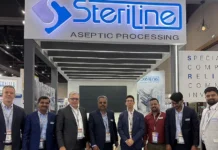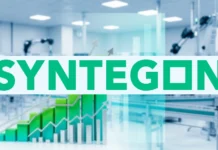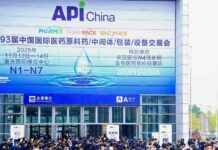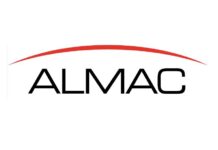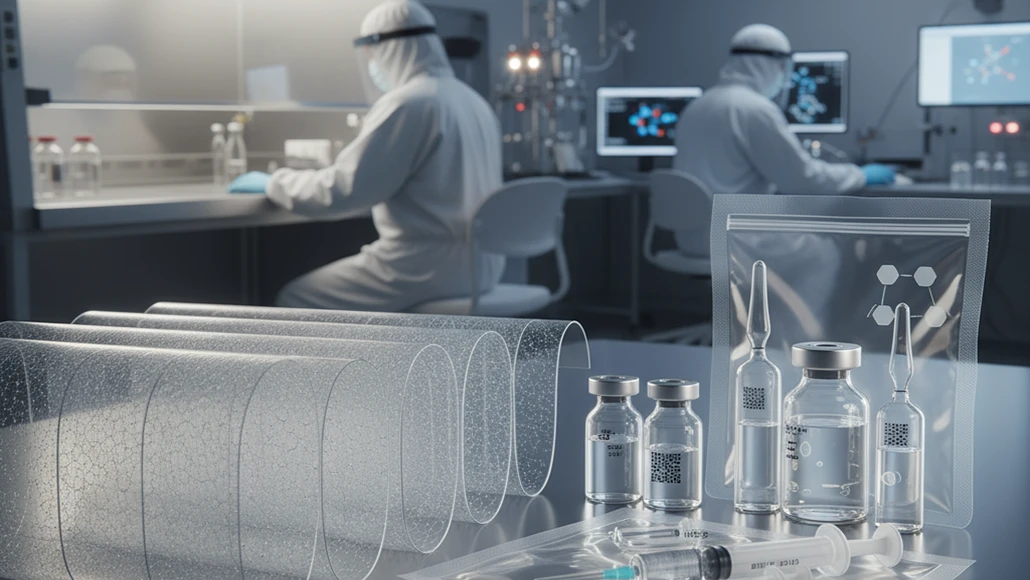Advanced Barrier Packaging for Sensitive Biopharmaceuticals
The biopharmaceutical industry has experienced unprecedented growth in complex therapeutic products that require sophisticated packaging solutions to maintain their stability, efficacy, and safety throughout distribution and storage. Barrier packaging for biopharmaceuticals has emerged as a critical technology that addresses the unique challenges of protecting sensitive biological products from environmental factors including moisture, oxygen, light, and contamination while ensuring compatibility with diverse biologic formulations.
The Critical Importance of Barrier Properties in Biologic Protection
The global barrier films for pharmaceutical packaging market reached USD 8.39 billion in 2024 and is expected to grow at a compound annual growth rate of 4.4 percent through 2032, reflecting the increasing prevalence of biopharmaceuticals and the growing recognition of advanced barrier packaging as essential for product integrity. This market expansion is driven by the unique requirements of biological products that are significantly more sensitive to environmental conditions than traditional small-molecule pharmaceuticals.
Biopharmaceuticals including monoclonal antibodies, vaccines, gene therapies, and cell-based treatments represent some of the most complex and valuable medications in modern healthcare. These products often require ultra-low temperatures for storage and distribution while demanding protection from environmental factors that could compromise their therapeutic effectiveness or cause dangerous degradation products.
The consequences of inadequate barrier protection for biopharmaceuticals extend far beyond economic losses to encompass potential patient safety risks from degraded or contaminated products. Unlike traditional pharmaceuticals that may simply lose potency when exposed to adverse conditions, biologics can form harmful aggregates or immunogenic compounds that pose serious safety risks to patients receiving these life-saving therapies.
Advanced Material Science Innovations Driving Barrier Performance
High-barrier packaging films have evolved significantly beyond traditional materials to incorporate sophisticated multilayer structures that provide superior protection against moisture, oxygen, and other environmental challenges. These advanced materials utilize combinations of polymers, metallic layers, and ceramic coatings to create barrier properties that exceed the requirements of even the most sensitive biopharmaceutical products.
Polyvinylidene chloride films represent one of the highest-performing barrier materials available for pharmaceutical applications, providing exceptional moisture and gas barrier properties that make them ideal for protecting sensitive biologics. These materials can be engineered with specific permeation rates that accommodate different product requirements while maintaining structural integrity throughout the distribution lifecycle.
Cyclic olefin polymers offer unique advantages for biopharmaceutical packaging through their exceptional chemical inertness and low extractable profiles that minimize the risk of product contamination or interaction. These materials provide excellent barrier properties while maintaining transparency that enables visual inspection of products and compatibility with automated filling operations.
Aluminum foil laminates continue to represent the gold standard for ultimate barrier protection, providing virtually impermeable barriers against moisture, oxygen, and light that are essential for ultra-sensitive biopharmaceutical products. Modern laminate structures incorporate improved adhesion systems and puncture resistance that enhance durability while maintaining superior barrier performance.
Multi-Layer Barrier Film Engineering and Design
Contemporary barrier packaging for biopharmaceuticals utilizes sophisticated multi-layer film structures that combine different materials to optimize barrier properties while maintaining processability and cost-effectiveness. These engineered structures can incorporate up to seven or more distinct layers, each designed to provide specific barrier or functional properties.
Coextrusion technologies enable the production of multi-layer barrier films with precise control over individual layer thickness and composition, creating optimized structures that provide maximum barrier performance with minimal material usage. These manufacturing approaches ensure consistent barrier properties while maintaining economic viability for high-volume pharmaceutical applications.
Metallized barrier films incorporate thin aluminum layers that provide enhanced barrier properties while maintaining flexibility and processability required for pharmaceutical packaging applications. These metallized structures can achieve barrier performance approaching that of aluminum foil while offering improved puncture resistance and visual appeal.
Nanocomposite barrier materials utilize nanotechnology to incorporate barrier-enhancing particles into polymer matrices, creating films with dramatically improved barrier properties without significant increases in thickness or weight. These advanced materials represent the cutting edge of barrier technology development for pharmaceutical applications.
Specialized Barrier Solutions for Different Biopharmaceutical Formats
Injectable biopharmaceuticals require packaging solutions that provide exceptional barrier properties while maintaining compatibility with sterile processing and filling operations. These applications often utilize specialized barrier materials that can withstand sterilization processes while providing long-term protection against environmental factors that could affect product stability.
Lyophilized biopharmaceutical products present unique packaging challenges that require barrier materials capable of protecting both the product and the freeze-drying process. These applications often require packaging that can accommodate vacuum conditions while providing excellent moisture barrier properties to prevent reconstitution issues.
Cold chain biologics require barrier packaging that maintains performance at ultra-low temperatures while providing thermal insulation that supports temperature stability during distribution. These specialized applications may incorporate phase-change materials or advanced insulation systems that work in conjunction with barrier films to provide comprehensive product protection.
Oral biopharmaceutical formulations require barrier packaging that protects sensitive biological components from gastric conditions while maintaining stability throughout the product shelf life. These applications often utilize enteric barrier systems that provide selective permeability properties designed to optimize bioavailability and therapeutic effectiveness.
Environmental Protection Mechanisms and Performance Characteristics
Moisture barrier properties represent one of the most critical aspects of biopharmaceutical packaging, as water activity can trigger protein aggregation, enzymatic degradation, and microbial growth that compromise product safety and efficacy. Advanced barrier films achieve water vapor transmission rates as low as 0.01 grams per square meter per day, providing exceptional protection for moisture-sensitive biologics.
Oxygen barrier capabilities protect biopharmaceuticals from oxidative degradation that can alter molecular structure and reduce therapeutic effectiveness. High-performance barrier films achieve oxygen transmission rates below 0.1 cubic centimeters per square meter per day, providing protection levels that exceed the requirements of most sensitive biopharmaceutical formulations.
Light barrier properties protect photosensitive biopharmaceuticals from degradation caused by ultraviolet and visible light exposure. Advanced barrier films incorporate UV-blocking additives and opaque layers that provide complete protection while maintaining other critical barrier properties.
Chemical compatibility ensures that barrier packaging materials do not interact with biopharmaceutical formulations or leach extractable compounds that could affect product quality or safety. Extensive extractable and leachable testing validates the suitability of barrier materials for specific biopharmaceutical applications.
Integration with Primary Packaging Systems
Barrier packaging systems must integrate effectively with primary containers including vials, syringes, and specialized delivery devices while maintaining comprehensive protection throughout the product lifecycle. This integration requires careful consideration of material compatibility, sealing systems, and handling requirements that address the complete packaging system.
Container closure integrity testing validates that barrier packaging systems maintain their protective properties throughout normal handling and storage conditions. These testing protocols ensure that packaging seals remain intact while barrier materials continue to provide specified protection levels over extended time periods.
Compatibility with automated filling and packaging equipment ensures that barrier materials can be processed efficiently while maintaining quality standards and regulatory compliance. This compatibility encompasses material handling characteristics, seal formation requirements, and quality control capabilities that support high-speed pharmaceutical manufacturing operations.
Sterilization compatibility ensures that barrier packaging materials can withstand sterilization processes including gamma radiation, electron beam, and ethylene oxide treatment while maintaining barrier properties and material integrity. This compatibility is essential for sterile biopharmaceutical products that require validated sterilization procedures.
Quality Assurance and Testing Methodologies
Barrier performance testing utilizes standardized methodologies that accurately measure water vapor transmission, oxygen permeation, and other critical barrier properties under conditions that simulate pharmaceutical storage and distribution environments. These testing protocols provide quantitative data that supports material selection and packaging design decisions.
Accelerated stability testing evaluates barrier packaging performance under elevated temperature and humidity conditions that accelerate degradation processes, enabling prediction of long-term barrier performance and product protection capabilities. These studies support shelf-life determinations and packaging validation requirements.
Extractable and leachable testing ensures that barrier packaging materials do not contribute compounds that could affect biopharmaceutical product quality or safety. These comprehensive analytical studies evaluate potential migration of packaging components under various storage conditions and contact scenarios.
Integrity testing methodologies validate that barrier packaging maintains its protective properties throughout handling, distribution, and storage processes. These tests may include visual inspection, dye penetration, vacuum decay, and other techniques that detect compromise of barrier integrity.
Regulatory Compliance and Validation Requirements
Barrier packaging for biopharmaceuticals must comply with stringent regulatory requirements that ensure material safety, performance consistency, and compatibility with pharmaceutical products. These requirements encompass material specifications, manufacturing controls, and validation studies that demonstrate consistent barrier performance.
Drug Master File submissions provide regulatory authorities with comprehensive information about barrier packaging materials including manufacturing processes, quality control procedures, and safety data that support pharmaceutical product approvals. These submissions must include detailed analytical data and stability studies that demonstrate packaging suitability.
Good Manufacturing Practice compliance ensures that barrier packaging materials are produced under controlled conditions that maintain consistent quality and performance characteristics. These manufacturing standards encompass raw material controls, process validation, and quality assurance procedures that ensure reliable barrier properties.
Validation protocols demonstrate that barrier packaging systems consistently provide specified protection levels while maintaining compatibility with biopharmaceutical products. These protocols include performance testing, stability studies, and compatibility assessments that support regulatory approval and commercial use.
Sustainability Considerations and Environmental Impact
Environmental sustainability has become increasingly important in biopharmaceutical packaging design, driving development of barrier materials that provide excellent protection while minimizing environmental impact through recyclability, biodegradability, or reduced material usage.
Recyclable barrier films utilize mono-material structures or easily separable layers that enable recycling without compromising barrier performance during the product lifecycle. These sustainable approaches address environmental concerns while maintaining the protection levels required for sensitive biopharmaceuticals.
Bio-based barrier materials derived from renewable resources offer potential for reducing environmental impact while providing effective protection for biopharmaceutical products. These materials may incorporate plant-based polymers or other sustainable raw materials that reduce dependence on fossil fuel-derived components.
Lightweighting initiatives focus on reducing barrier film thickness while maintaining protection performance, resulting in reduced material usage and environmental impact. These approaches utilize advanced materials and manufacturing techniques that optimize barrier properties per unit weight of packaging material.
Economic Considerations and Cost Optimization
The implementation of advanced barrier packaging for biopharmaceuticals requires careful economic analysis that balances material costs against product protection value and regulatory compliance requirements. While high-performance barrier materials may command premium prices, their value in protecting expensive biopharmaceutical products often provides compelling economic justification.
Total cost of ownership analysis considers not only material costs but also processing efficiency, quality assurance requirements, and potential product loss prevention that collectively determine the economic value of barrier packaging solutions. These comprehensive analyses often demonstrate that advanced barrier materials provide superior value despite higher initial costs.
Scale economies in barrier film production enable cost optimization through volume purchasing and standardized material specifications that support multiple biopharmaceutical applications. These approaches can reduce per-unit costs while maintaining performance standards and quality requirements.
Value engineering approaches optimize barrier packaging design to provide required protection levels while minimizing material usage and processing costs. These engineering methodologies can identify opportunities for cost reduction while maintaining or improving barrier performance and regulatory compliance.
Future Innovations and Emerging Technologies
The future of barrier packaging for biopharmaceuticals will be shaped by continued advances in materials science, nanotechnology, and smart packaging capabilities that provide enhanced protection while supporting new therapeutic modalities and delivery methods.
Active barrier systems incorporate oxygen scavengers, moisture absorbers, or antimicrobial agents that provide dynamic protection beyond passive barrier properties. These active systems can extend product shelf life while providing enhanced protection against specific degradation mechanisms.
Smart barrier packaging incorporating sensors and monitoring capabilities will provide real-time feedback about product conditions and barrier performance throughout the distribution lifecycle. These intelligent systems will enable proactive intervention when barrier integrity is compromised or environmental conditions exceed specifications.
Personalized barrier packaging solutions will address the unique requirements of individualized therapies and precision medicine approaches that require customized protection and delivery systems. These specialized solutions will support the growing trend toward personalized biopharmaceutical treatments.
Conclusion: Advancing Biopharmaceutical Protection Excellence
Advanced barrier packaging for sensitive biopharmaceuticals represents a critical enabling technology that supports the development and commercialization of life-saving biological therapies. As biopharmaceutical products continue to increase in complexity and value, sophisticated barrier packaging solutions will become even more essential for ensuring product quality, safety, and therapeutic effectiveness throughout global distribution networks.
The successful implementation of advanced barrier packaging requires ongoing collaboration among material scientists, packaging engineers, biopharmaceutical developers, and regulatory specialists to create solutions that address evolving therapeutic requirements while maintaining economic viability and environmental responsibility. Through continued innovation and optimization, barrier packaging technologies will continue to support the advancement of biopharmaceutical medicine while ensuring that these valuable therapies reach patients in optimal condition worldwide.




